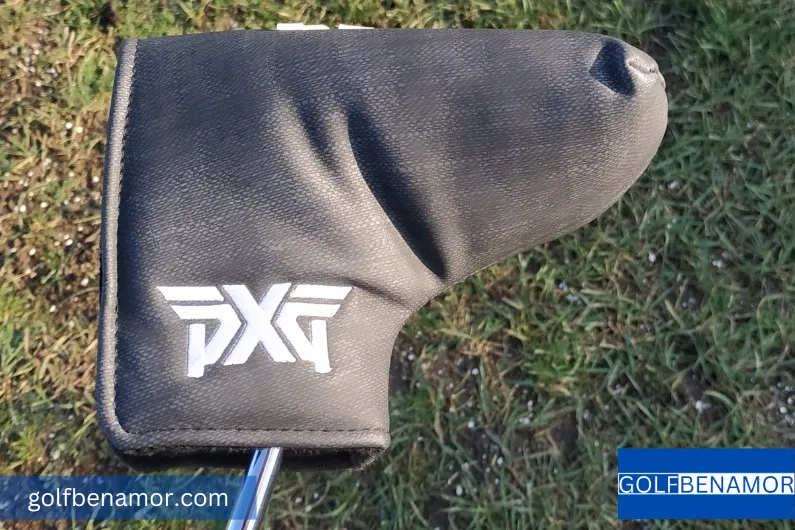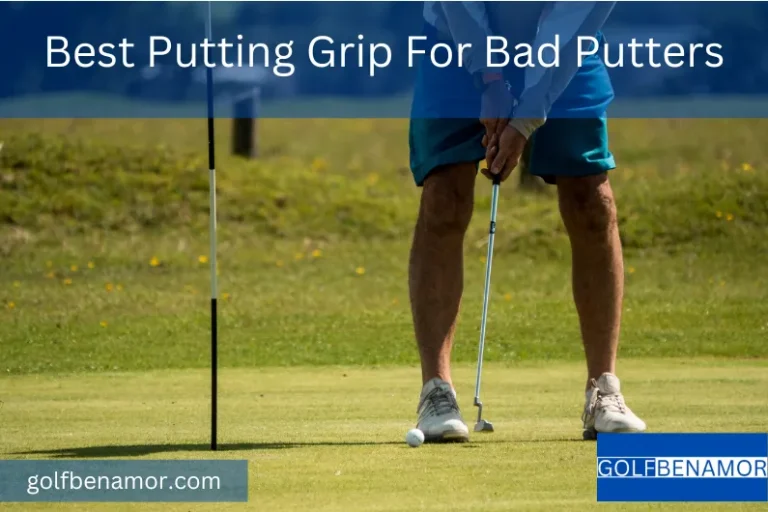Best Putting Grip For Consistency
Finding the right putting grip can significantly lower your scores and increase your enjoyment on the links. In this article I look at some of the different putting styles and putter grips. How you grip the putter is a part of the game worth spending some time on!
How do I choose a putting grip?
When it comes to choosing a putting grip style, there are a few factors to consider. First, you need to determine which type of grip style suits you best and feels most comfortable. There are various putting grips to choose from, including the conventional putting grip, the reverse overlap grip, the cross-handed grip, the claw grip, left-hand low grip, arm lock grip, prayer grip and the pencil grip. Experiment with different grips on the putting green to find the one that feels most natural and allows you to have control over your putter head.
Next, consider the size of the grip. A larger grip may provide more stability and control, while a smaller grip allows for a lighter touch. It is also important to grip your putter in a way that promotes proper alignment and allows you to return the clubface square at impact. This usually means ensuring that your palms are facing each other and that the grip runs diagonally across your fingers.
Unlike your other clubs you should be gripping your putter more in the palms of your hands rather than the fingers.
Whichever style of grip you choose you will need to practice with your chosen grip to develop consistency and confidence in your putting stroke.
What sized putter grip should I use?
When it comes to choosing the right putter grip size, it largely depends on personal preference and comfort. The putter grip is an essential component that can greatly impact your putting stroke and overall performance on the greens. There are various sizes of putter grips available in the market, ranging from standard to oversized. A larger grip can help reduce wrist movement and promote a smoother stroke, especially for those with a tendency to get too handsy during their putting motion.
On the other hand, a smaller grip can provide more feel and control for players who prefer a lighter touch on the greens. It is recommended to try out different grip sizes and see which one feels the most natural and comfortable in your hands. Ultimately, the goal is to find a putter grip size that instills confidence and allows for repeatable and consistent putting strokes.
Modern grips will have a flat side on the top of the putter grip where you are supposed to rest your thumbs.
If you suffer from arthritis then a larger grip can often be beneficial.
Should I wear a glove while putting?
Whether or not to wear a glove while putting is a personal preference. Some golfers argue that wearing a glove allows for a better grip on the putter, providing a more stable and controlled stroke. The grip is a crucial aspect of putting, as it determines the level of control and accuracy one can achieve. By wearing a glove, golfers claim to reduce the chance of the putter slipping out of their hands, particularly in situations where sweat or moisture may be present.
On the other hand, some golfers prefer not to wear a glove while putting. They argue that the absence of a glove allows for a more direct and tactile connection with the putter, enabling them to gain a better feel for the greens. Ultimately, the decision of whether or not to wear a glove while putting should be based on personal comfort and individual preferences. It may be useful to experiment with both options to determine which provides the best grip and overall performance on the greens.
If you look at the majority of PGA Tour players then I think you will see that wearing a grip while putting is not that common. Since these guys are playing for their livelihoods this is probably one part of their game you want to copy.
Can you regrip your own putter?
Yes, you can regrip your own putter with the right tools and a little bit of patience. The grip on a putter tends to wear out over time, leading to decreased control and feel. To replace it, you will need a new grip and a grip removal tool. The grip removal tool helps you remove the old grip without damaging the shaft.
Personally I use a utility knife with a hook blade so as not to damage the club shaft.
Once you have successfully removed the old grip, you can clean the shaft with a mild solvent and let it dry. Next, apply grip tape to the shaft by removing the backing and wrapping it tightly around. Finally, apply grip solvent to the tape and inside of the new grip, allowing it to slide on easily. Use a vice or clamp to secure the putter while the grip dries overnight. By regripping your own putter, you can customize the grip to your preference and save money in the process.
Make sure to align the grip correctly!
Tips on buying a putter to suit you.

Why Is Putting Grip So Important?
Putting accounts for around 40% of the shots you take so it’s important to get this part of the game right.
The putting grip is an essential aspect of a golfer’s game, as it directly affects the control and accuracy of their putts. Unlike the full golf swing, which requires power and distance, putting is all about finesse and precision. The putting grip is the golfer’s connection to the putter, and it determines the ability to strike the golf ball smoothly and consistently.
There are various putting grips that players can choose from, including the traditional grip, the cross-handed grip, and the claw grip. Each golfer must find the grip that feels most comfortable and natural to them. Your putting grip should allow for a stable and steady position throughout the putting stroke.
Many golfers find that the grip that works best for putting is one that places the dominant hand slightly lower on the putter grip. This position helps to promote a smooth and consistent pendulum-like motion, resulting in better control and accuracy on the greens. Therefore, understanding and mastering the putting grip is crucial for any golfer looking to improve their putting performance.
Which Putting Grip Is Right for You?
When it comes to putting in golf, finding the right grip can greatly impact your performance on the green. One of the most common putting grips is the conventional grip, where both hands are placed on the club and the thumbs are aligned down the shaft. This grip provides stability and control for many golfers.
Another popular putting grip is the reverse overlap grip, where the pinky of the trailing hand overlaps the index finger of the lead hand. This grip can help with a smoother stroke and is often preferred by players with smaller hands. The claw grip is another unique option, where the lead hand forms a claw-like shape on the grip. This grip can help with reducing wrist movement and maintaining a consistent stroke.
Ultimately, the best putting grip for you will depend on your individual preferences and what feels most comfortable and natural. It may require some experimentation to find the grip that works best for your game.
The left hand low grip has grown in popularity as it helps keep the shoulders more level promoting a more pendulum style stroke. It also reduces the tendency for players to flick at the ball with their dominant hand.
The arm lock putting style involves holding the left forearm against the putter to prevent it wandering through the stroke.
How Firm Should I Hold The Putter?
On a scale of 1 to 10 where 1 is as light as possible and 10 is as hard as possible you want to be around a 2 or 3. Your grip pressure should be very light.
Best Putting Grip For Consistency: Conclusion
Learn to love your putter as it can be a great equalizer when other parts of your game aren’t quite working at their best.
In the market for a new driver? Here’s a review of the Paradym from Callaway.




